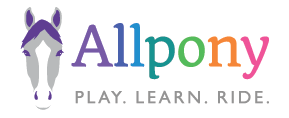A Recipe for Soundness…

A recipe for soundness…
Ok, not really, there’s no such thing. But here’s my best attempt. I have some students shopping for young horses, and I’ve sold some super nice horses recently, and everyone is trying to figure out the best crystal ball that will tell them if their future horse will stay sound in the long term. Spoiler alert – no one (not even the fanciest vet) can tell you that. Horses are horses, and they do incredibly dumb things to hurt themselves all the time. But here’s what I advise my students:
1. Turn your horse out. Motion is lotion, and horses who move around as much as possible, on varied terrain, are going to be stronger and have more resilience than horses bubble wrapped and kept inside.
2. Buy the best conformation you can. The horse doesn’t need to win all the breed shows, but certain conformation problems are a deal breaker for me – long sloping pasterns, super straight hocks and stifles, super long backs, crooked legs. You’re just asking for problems down the road. No horse is perfect, and even those who are close can go lame, but set yourself up for success. Good basic conformation is MORE important than fancy movement.
3. Buy a horse with good feet. “No hoof no horse” is not just some old timey adage. If you are dealing with a horse with super thin soles or walls, chroically slung under heels, negative palmar angles, or a high/low problem, you will be dealing with lameness more often.
4. Hire a good farrier. To go along with the last point, your horse’s feet need to be in the best shape possible. I’m not getting into it with the barefoot vs. corrective shoeing people. I’ll just say try to find the best farrier you can. Ask the vets, ask people who have horses with beautiful feet at the shows, whatever you can. And be good to that farrier!!
5. Ride on decent footing. Notice I didn’t say expensive footing! Super deep, super hard, slippery or uneven are no nos. A nicely mowed field that’s decently flat is better than a pretty looking arena that is way too deep.
6. Give your horse good nutrition. Especially with young, growing horses – keeping them healthy but NOT fat is important. Work with your vet to design a program that gives your horse enough vitamins, minerals, protein and fat. Making a horse super fat and shiny might look nice for pictures, but that is not a kind thing to do for their long term health. On the other hand, not feeding a horse enough can have seriously negative consequences for their development as well.
7. Get tack that fits and then focus on something else. Yes, you need a saddle, bridle and bit that fit your horse. But you probably don’t need to spend half your life savings on it, and have it adjusted 4 times a year by a wizard from Europe. Make sure your saddle is balanced, doesn’t pinch, and isn’t making your horse’s back sore (or you sore) and then move on. All the fancy pads, newest ergonomic designs, latest in bit technology etc are mostly just marketing.
8. Stick with a regular training program. Horses who sit around doing nothing are likely to get stiff, overweight and lack muscle. Horses who are overworked are likely to damage joints and soft tissue. 3-4 days a week is a great goal to aim for. More is not always better, and if you have to give your horse an extended period off, please be mindful as you bring them back into fitness and don’t push it just so you can get to a show.
9. Come up with a long term plan with your vet. Most vets would love to see your horse for a once a year “wellness exam.” This does not need to be terribly expensive, but just an overall soundness check where the two of you are able to plan out the best course of action for your horse. Depending on age and level of work, this could include supplements, injections, body work, etc. But allow your vet to have a baseline and get to know your horse BEFORE there is a problem!
These are not necessarily in order of importance. Just my rambling thoughts. What I did NOT include is x-raying every joint in the body, all manner of drugs, supplements, fancy equipment, bloodlines, etc. I’m not putting any of that stuff down, but sticking to tried and true basics will do you better in the long term than jumping on the latest bandwagon.


Horsemanship Courses
Take a new course, or complete a course you started.
Related Posts
Rudy Says “NO” to Acupuncture
A long time ago, my back was hurting, and my gaits were off. I heard someone say acupuncture. I didn’t know what that word meant, but I soon found out. Mom agreed to this treatment because she thought it might help me and had positive results from it herself.
Allpony Illustrator Wins PNHS Art Contest
The Pennsylvania National Horse Show team is pleased to announce that Susan DiFelice, owner and creator of Allpony, has been named the winner of the 2023 PNHS Poster and Program Cover Art Contest. Allpony is an online platform dedicated to providing engaging and...
How We Manage to Keep Flies OUT of the Barn
It’s that time of year. The flies are back. Lately a few people have remarked on the fact that we don’t have many flies. This is not luck. We work hard at it! Here’s how we manage to keep those nasty buggers away.



